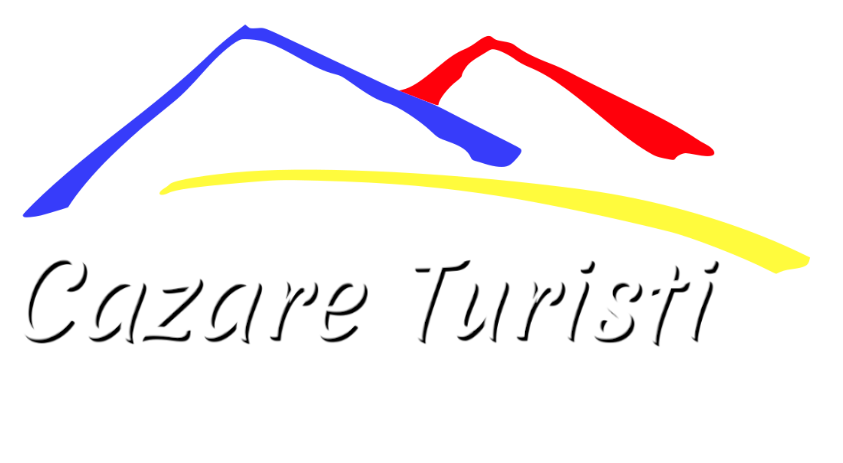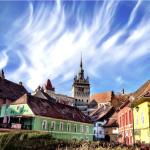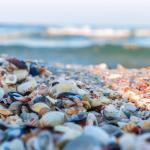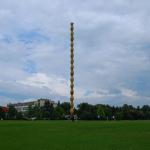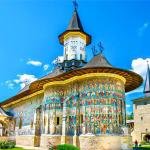Transfagarasan Region accommodation in guesthouses, villas and hotels
Transfagarasan Region
If you're looking for an unforgettable mountain experience, with breathtaking scenery, fresh air, and numerous leisure activities, then the Transfagarasan area should be at the top of your travel list. Whether you're seeking rustic Transfagarasan accommodation in a mountain guesthouse or prefer the modern comfort offered by quality hotel services, this region offers a wide range of options. Moreover, the broad array of Transfagarasan accommodation choices is enhanced by the charm of the tourist villages surrounding the alpine road, attracting thousands of visitors each year.
Where is the Transfagarasan area located?
The Transfagarasan is one of the most spectacular mountain roads in Romania and Europe, crossing the Southern Carpathians from north to south. The road (DN7C) connects the towns of Bascov (in Argeș County) and Cârțișoara (in Sibiu County), cutting through the Făgăraș Mountains over a distance of approximately 90 kilometers. Built in the 1970s for strategic reasons, the Transfagarasan has since become a top tourist attraction, located in the heart of the Făgăraș Mountains at altitudes exceeding 2,000 meters.
This geographical area boasts an impressive variety of landforms, from dense coniferous forests to steep ridges and glacial lakes. The rare beauty of the landscape is completed by spectacular tunnels, viaducts, and dizzying switchbacks, turning every trip on the Transfagarasan into an adventure.
The state of accommodation units in the Transfagarasan area

When it comes to Transfagarasan guesthouses and other lodging options, the offer is continuously diversifying and modernizing. Along the route or near major tourist points, visitors can find everything from traditional guesthouses and mountain cabins to 3- and 4-star hotels. Those seeking an authentic experience can choose accommodation in local households that offer traditional products and Romanian-style hospitality.
During the summer season, when the road is fully open to traffic (usually between June and October), demand for Transfagarasan accommodation is high. It is advisable to book at least a few weeks in advance, especially in July and August when tourists from around the world come to admire this giant feat of Romanian engineering.
In terms of prices, nightly rates vary depending on the level of comfort and amenities. A room in a mid-range guesthouse typically starts at 150 lei per night, while premium units can charge between 300 and 500 lei for higher-end services, panoramic views, or spa access.
Road conditions leading to the Transfagarasan
To reach the Transfagarasan area, the main access routes are DN1, DN7, and DN73, depending on your starting point. For example, from Bucharest, you can travel via Pitești (DN7), and from Sibiu or Brașov, you can drive up through Cârțișoara or Făgăraș. Generally, the national roads leading to the Transfagarasan are in good condition and are frequently repaired during the warm season.
However, direct access to DN7C is restricted during the winter due to avalanche risks and harsh weather conditions. The road section between Bâlea Cascadă and Piscu Negru is officially closed from November 1 to the end of June, but tourists can still reach Bâlea Lake via the cable car on the northern side, offering a spectacular alternative during the winter months.
How tourists can spend their free time
The Transfagarasan area is ideal for nature lovers, adventurers, and those seeking relaxation. Hiking is one of the main attractions, with marked trails leading to peaks such as Negoiu, Moldoveanu (the highest in Romania – 2,544 m), Viștea Mare, and more. Bâlea Lake, a glacial lake located at 2,034 m altitude, is one of the most visited destinations in the region. Nearby are mountain lodges, restaurants, and the famous Ice Hotel – a unique winter attraction.
Tourists can also enjoy mountain biking, off-roading, paragliding, or opt for guided tours of nearby fortresses and monasteries. For photography enthusiasts, the dramatic scenery of the Transfagarasan provides a perfect setting for exceptional shots.
In addition, sport fishing in mountain rivers or relaxing in hot tubs are increasingly popular activities in mountain guesthouses. Some lodging facilities also offer traditional culinary experiences with dishes specific to the Transylvanian and Wallachian regions, served in an authentic setting.
Must-see tourist attractions in the Transfagarasan area
The Transfagarasan is more than just a spectacular mountain road – it’s a gateway to some of Romania’s most impressive tourist attractions. Here are several top spots worth visiting:
Bâlea Lake – Situated at over 2,000 meters altitude, this glacial lake is undoubtedly one of the jewels of the Transfagarasan. In summer, it's perfect for hiking; in winter, the main attraction is the Ice Hotel, rebuilt each season from blocks of ice taken directly from the lake.
Poenari Fortress – Perched atop a steep mountain, the fortress is known as the residence of Vlad the Impaler. To visit, you must climb over 1,400 steps to the ruins, but the panoramic view from the top is well worth the effort. It’s a place steeped in history and mystery, perfect for fans of legends and medieval stories.
Vidraru Dam and Lake Vidraru – Located at an altitude of 830 m, Vidraru Dam is an impressive achievement of Romanian engineering. Built in 1966, it is one of the largest dams in Europe. Tourists can take boat rides, fish, or simply enjoy the spectacular mountain scenery.
Capra–Bâlea Tunnel – The longest road tunnel in Romania (about 884 m), connecting the southern and northern slopes of the Transfagarasan. Passing through the tunnel is a unique experience, especially for those ascending this alpine road for the first time.
Bâlea Waterfall – Located at about 1,200 m altitude, it is one of the most beautiful waterfalls in the Carpathians, with a drop of over 60 m. Easily accessible, it’s a popular stop for tourists heading to Bâlea Lake.
Curtea de Argeș Monastery – Although not directly on the Transfagarasan, it is worth visiting due to its proximity to the southern starting point of the road. It is a symbol of Romanian religious architecture, tied to the legend of Meșterul Manole.
Well-known tourist towns near the Transfagarasan
The Transfagarasan region is flanked by several tourist towns that serve as excellent bases for exploring the Făgăraș Mountains:
Cârțișoara – The northern gateway to the Transfagarasan, a picturesque village with traditional guesthouses, local museums, and hospitable people. From here, you can easily access Bâlea Waterfall and Bâlea Lake. It's a favorite destination for those seeking authentic Transfagarasan guesthouses and quick access to hiking trails.
Arefu – A mountain village in Argeș County, close to the Vidraru Dam, Arefu is a peaceful destination ideal for hiking and exploring Poenari Fortress. Numerous cabins and guesthouses here offer traditional Transfagarasan accommodation.
Corbeni – A commune near Vidraru Dam, Corbeni is known for its spectacular scenery and mountain guesthouses offering excellent conditions for families and groups. It’s an ideal spot for relaxation or starting hikes into the Făgăraș Mountains.
Căpățânenii Pământeni – Another Argeș County village near the Transfagarasan, offering stunning views and nature-immersed lodging options.
Tourism impact and future perspectives
Over the past decade, tourism in the Transfagarasan area has seen significant development, driven both by intensive international media promotion and a growing desire among Romanians to explore their own country. The fact that Top Gear dubbed the Transfagarasan “the most spectacular road in the world” greatly boosted its international reputation.
This popularity has led to increased investments in Transfagarasan guesthouses, improved infrastructure, and a diversification of tourism services. However, to support sustainable tourism, it's essential that development remains balanced while protecting the fragile natural environment of the Făgăraș Mountains.
Tourism promotion projects, trail digitalization, and the introduction of mobile apps for tourist information are key steps toward modernizing mountain tourism. Also, involving local communities in sustainable tourism ensures an authentic experience for visitors and real economic benefits for locals.
The Transfagarasan area is a true paradise for nature lovers, adventurers, history buffs, and photographers. With a growing and well-developed network of Transfagarasan accommodation, reasonably good access roads, and a wide range of activities, the region stands out as one of Romania’s premier mountain destinations.
Whether you’re ascending its dizzying switchbacks for the first time or returning to relive its emotion and beauty, the Transfagarasan always offers a fresh experience. Be sure to book your Transfagarasan accommodation early, plan your hikes, and leave your daily worries behind to plan your hikes, and leave your daily worries behind to enjoy one of the most spectacular tourist destinations in Europe.
